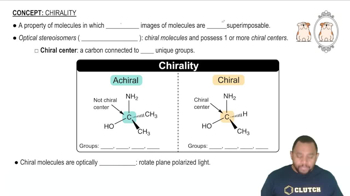Here are the essential concepts you must grasp in order to answer the question correctly.
Speed of Light
The speed of light in a vacuum is approximately 299,792 kilometers per second (km/s). This constant is fundamental in physics and is denoted by the symbol 'c'. In fiber optic cables, while the speed of light is reduced due to the medium, the question assumes it remains the same as in a vacuum, which simplifies calculations.
Recommended video:
Distance and Time Relationship
The relationship between distance, speed, and time is described by the formula: distance = speed × time. This equation allows us to calculate the time it takes for a signal to travel a certain distance when the speed is known. Rearranging the formula gives time = distance/speed, which is essential for solving the problem presented.
Recommended video:
Electrochemical Stoichiometric Chart (Time)
Signal Propagation in Fiber Optics
In fiber optics, signals are transmitted as light pulses through thin strands of glass or plastic. The speed of light in these materials is typically slower than in a vacuum due to refraction, but the question specifies the speed as that in a vacuum. Understanding how light travels through different media is crucial for accurately determining signal travel times in practical applications.
Recommended video:




